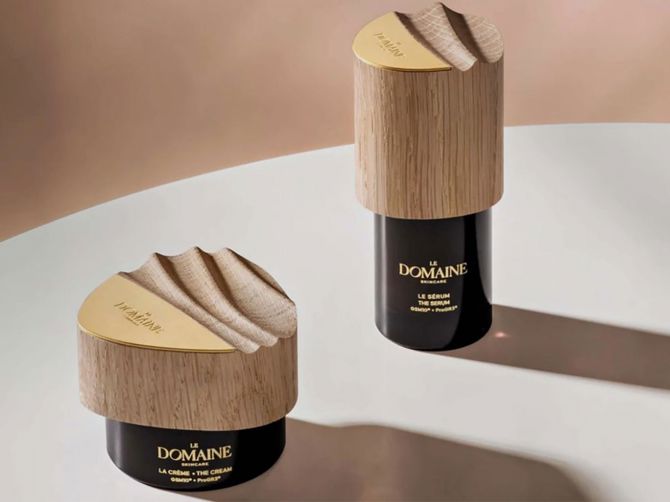Today’s male beauty consumers are increasingly informed and sophisticated, bolstered by dynamic sociocultural influences that are transforming gendered beauty norms. Self-care narratives partnered with curiosity in ingredient-led beauty are encouraging more men to invest in and expand their grooming routines. In the US, the evolution is underscored by a digital pulse, with Gen Z leading the push to normalise self-care on social media, while men’s willingness to explore beauty is encouraging an influx of male celebrity beauty brands.
Growing interest in advanced care is encouraging men to expand grooming routines
Increasingly sophisticated and informed male beauty shoppers elevated men’s grooming to 9.8% current value growth in 2022, outpacing the US beauty and personal care industry. Much as women increased self-care and ingredient-led beauty behaviours post-pandemic, male self-care is becoming more advanced. In skin care, features like natural/organic (+9%), strong brands (+7%) and super-high quality (+7%) saw a sharp rise in interest over 2021-2022, with positioning for race/ethnicity and ingredient formulation (+6%) not far behind (Euromonitor Voice of the Consumer: Beauty Survey, fielded June-July 2022 (n=20,320).
Societal change and rising gender fluidity are encouraging more men to explore beyond traditional grooming categories, with the projected CAGRs for men’s toiletries and fragrances set to significantly outperform shaving
Source: Euromonitor International
A sign of ongoing sophistication in men’s grooming routines, fewer male respondents cleanse and shave, but more men are using facial moisturisers, acne treatments, anti-agers and BB or CC creams more regularly.
Men are also purchasing beauty and personal care more frequently on e-commerce and beauty specialists, while shifting from supermarkets and hypermarkets.
The percentage of men shopping at online retailers, including beauty specialists, outpaced women in 2022
Source: Euromonitor International
Growing demand for high-quality products and reputable brands is further supporting the increase, as these types of retailers tend to offer curated selections with more specialised ranges.
While social media only represents a minor share of overall purchasing locations, purchases by men through social media not only nearly doubled over 2019-2022 but also outpaced women’s responses, alluding to the larger role social media plays in inspiring and influencing purchasing decisions.
Rising popularity of “Get Ready With Me” video content normalises men’s beauty practices
In 2022, 16.7% of US male respondents believed that social media influencers are extremely influential information sources, a jump from the 13.7% recorded in 2021
Source: Euromonitor International
This shift is parallel to the rise of male content creators and “skinfluencers” on TikTok who, through short GRWM videos, are expanding product awareness, ingredient education, and encouraging elevated grooming habits in men’s daily routines.
Skin care companies such as CeraVe and Neutrogena are also using TikTok as a channel to engage with male consumers through influencer partnerships and ad sponsorships.
50% of Gen Z male respondents find information about a brand, company or products through TikTok in 2023 – a steep increase from 36% in 2022
Source: Euromonitor’s Voice of the Consumer: Digital Survey, fielded in March-April 2023 (n=20,079)
From an engagement perspective, brands have a high success rate in digitally connecting to the average male consumer scrolling on their feed.
Hims is successfully leveraging the growing influence of digitalised shopping experiences
Hims, an online telehealth company, provides specialised wellness products across mental health, sexual health, hair loss and skin care. With the bulk of the brand’s revenue spent on marketing, Hims’s approach highlights the importance of interacting with the ever-online consumer through a multi-channel social media ad and influencer partnership strategy. Brands should consider creating digital ecosystems not only to satisfy male consumers’ inclination towards convenience and e-commerce, but also to empower men in their beauty journey.
Male celebrity brand launches further invigorate US consumer interest in men’s grooming
Although Gen Z has led the movement to normalise male participation in self-care through personal care, men’s openness to explore grooming products is also tied to the rise of male celebrity brands entering the scene, and vice versa. New-era celebrity brands no longer use celebrities as mere endorsements to non-differentiated products. Because consumers in the digital age value authenticity and rebuke cash-grab operations, celebrities are encouraged to provide quality products that can address a range of needs for audiences across different segments.

Source: CNN.com
Notable launches in recent years include Le Domaine from Brad Pitt, which is a premium antioxidant anti-aging focused skin care line; Loved01 from John Legend, which gears towards more melanin-rich skin and retails at under USD20 to ensure accessibility; and Barker Wellness, a vegan wellness brand with CBD-infused products for skin and health relief, founded by Blink-182 drummer, Travis Barker.
The future of men’s grooming
Many observers may argue that the influx of celebrity-backed brands in recent years has created an oversaturated market, and that consumer appeal is trending downwards. Good news for the men’s grooming market, consumer fatigue in celebrity men’s brands is less prevalent than celebrity beauty for women, as the men’s scene is still relatively undersaturated and less mature compared to the successes of the celebrity beauty bubble for women.
As both brands and consumers experience transformations in how to approach beauty philosophies for men, there are still ample opportunities within the US men’s grooming space for established players and new entrants to navigate and meet male consumer demands. Ingredient formulation, personalised treatment, celebrity products with authentic messaging, and social media as paths to grooming education and purchase are expected to be top of mind in the coming years. Offering product ranges that have targeted purposes resonates with consumers across demographics, and marketing through digital influencers will increase brands’ growth potential before the movement becomes mainstream.
For further analysis on the biggest obstacles and opportunities in men’s beauty and personal care, read our briefing, The Evolution of Men's Grooming, and for US-specific insights, read our Men's Grooming in the US country report.

